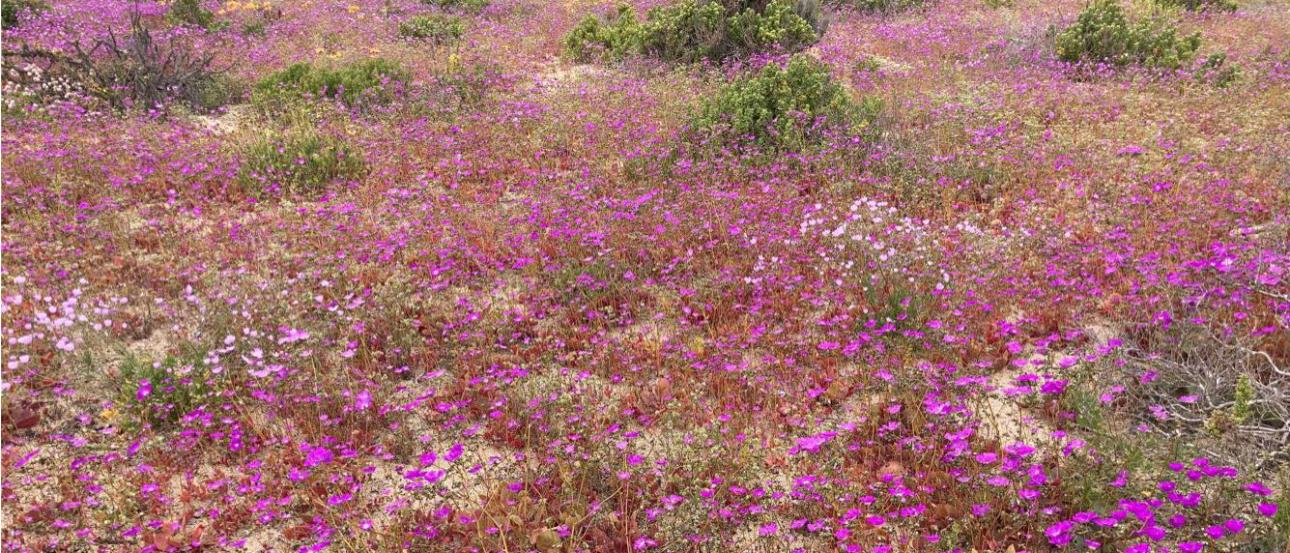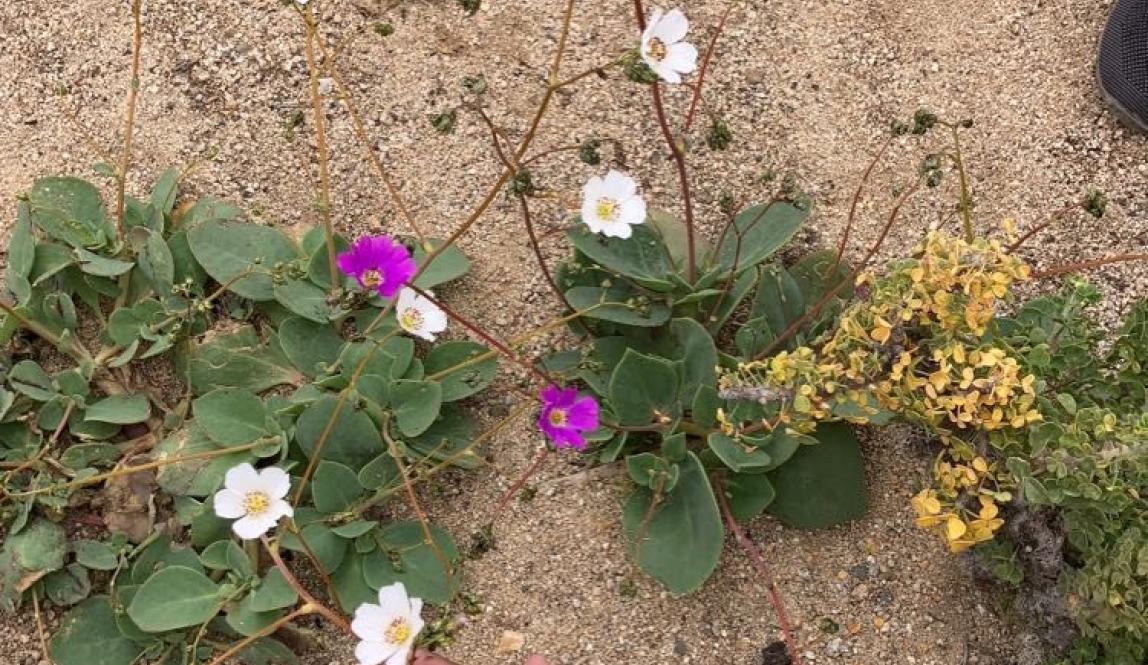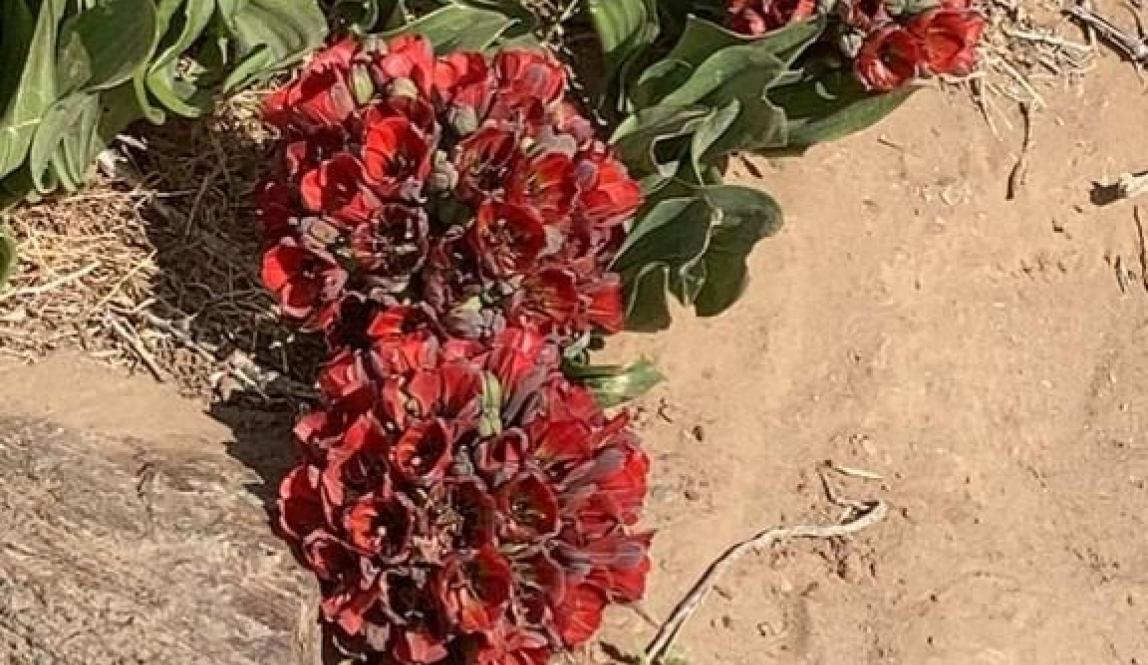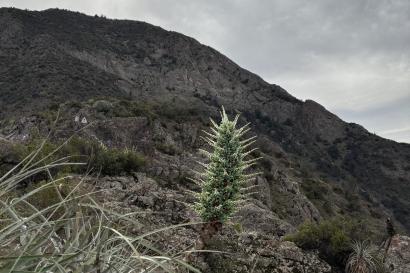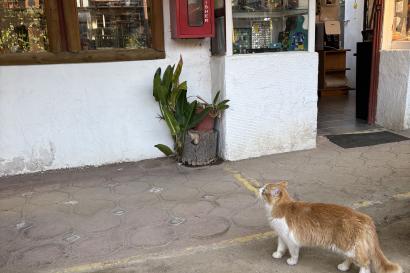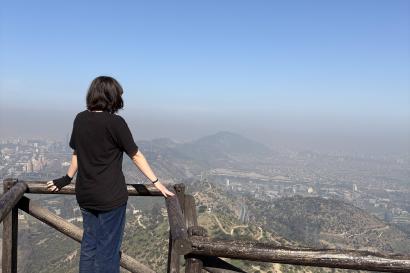The Atacama desert in the north of Chile is the driest in the world. Due to climate change, it gets drier every year. Also because of the continuous change in climates, it only rains in the desert once every 4-6 years. The amount of rain it receives is miniscule, but the effects are gigantic. When the rain reaches the desert, it explodes in flora. Fuchsia, white, yellow, lilac, and green are everywhere the eye can see. The display of flowers is well-known in the country and generally as something everyone should see. What makes it ever more rare is that it can only be seen in full bloom and brilliance for about a month. It´s known as the 'desierto florido.' I wasn´t even aware of the flowers until I got here, so I didn't know that I'd have the chance to see them until I had spent a few months here and learned more about the country and its geography.
The tour I went on was almost entirely made up of Chilean people. We started at 7:30am and ended at 8:30pm. The drive to our first stop was about 2 ½ hours, and the drive back to La Serena, the city where we left from, was about 3 ½ hours. I went with another exchange student from the United States who I met through our partner university, and we made up ⅔rds of the extranjeros—foreigners—in the entire group of ~20.
There are two different types of desierto florido. One is on the coast, and also gets hydration from the Pacific, and the other is in the depths of the desert. We also went to one of the national parks inside the desert to see specific flowers that only grow there. It´s called Llanos de Challe, and the flower is known as ´la Reina´ (the queen) due to its uniqueness. It´s better known name is "la Garra de Leon." This flower doesn´t grow anywhere else in the entire world, and is only found in this tiny stretch of space. There was one called "la Oreja de Zorro," which means Zorro´s ear, and could also be translated as the fox's ear - if we take out the second r. It's carnivorous, and really does look like an ear, as you can see in the picture I´ve attached.
Our tour guide was awesome, and very knowledgeable of the landscape. The stops we made were very different from each other, and each one showed a different side of the beautiful burst of life and color that can only be seen here every 4-6 years. Looking out the window as we drove around led to views of fuchsia fields, and yellow and orange plains. Everything that didn´t have colorful flowers on it featured variations of different types of plant life including cacti and bushes and grasses.
During our stop to see the coastal part of the desierto florido, we saw a rare flower—one that our guide had never seen before. It is a white version of one of the most common pink flowers that can be found in the desert.
I kind of happened upon this trip—the planning was done less than 48 hours before the tour and we figured it all out in one night. Despite the rush to organize and make it happen, I deeply enjoyed myself and got to see some extremely rare natural beauty. The tiniest bit of rain leads to all of those gorgeous brightly colored flowers. Kind of poetic, no?
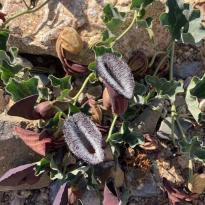

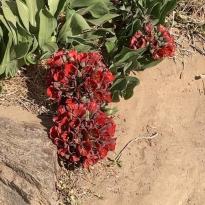

Maggie Peyton
My name is Maggie and I'm from Chicago, Illinois (one of the best cities in the States in my completely unbiased opinion). I'm left-handed, could watch Encanto every day, and I am a huge fan of the singer-songwriter Mitski. I study Public Policy at the University of Illinois in Chicago and am excited to learn more about Santiago. I hope to find a community away from the one I have at home and make Santiago my own.
